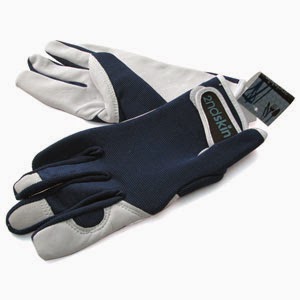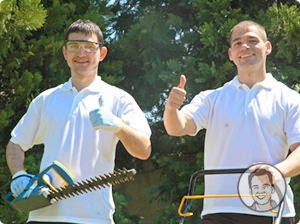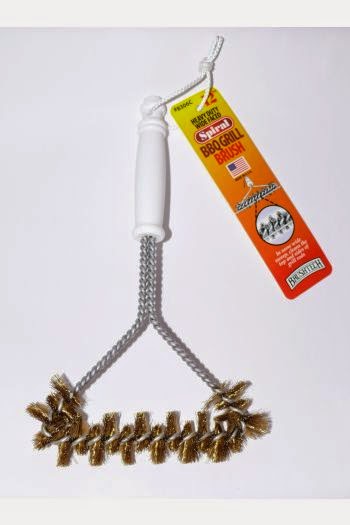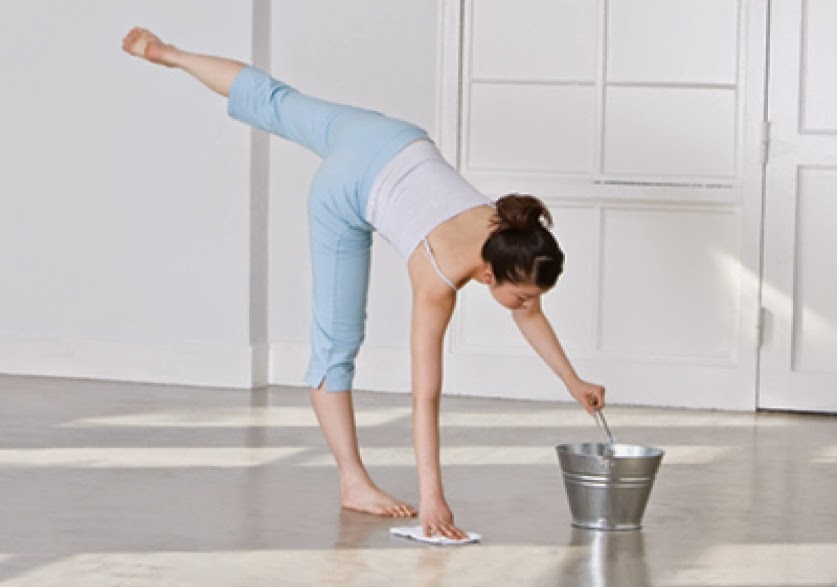I had to do a double take when last night’s weather forecast predicted max temps of 7 and 6 degrees Celsius respectively for Canberra this weekend. This is certainly more Snuggie and Onesie weather than gardening weather! But there is something rewarding and refreshing about getting out in the garden on a brisk winter’s day. Whilst it doesn’t look like there’s much growing going on, there are still plenty of jobs we can do to keep our garden in tip-top shape for spring. Check out our top winter gardening tips below, plus some great gardening products to motivate you to swap the Onesie and slippers for a pair of gumboots and gloves:
1. Turn fallen leaves into mulch and fertiliser by composting them
2. Prune roses now to get more flowers in spring and summer
Good quality secateurs are essential for quick and effective pruning, without damaging your plants
3. Plant broad beans – they are easy and delicious
These grow bags are great for small gardens, balconies or renters who can’t set up a permanent garden
4. Visit your nursery to buy camellias, magnolias and much more in flower to add instant colour for winter.
This handy tool roll includes essential gardening hand tools such as a trowel, hand fork and weeder
What to plant this month:
(R) is for Risky if you’re willing to take a punt on getting a full winter harvest from these plants before spring:
Beetroot
Bok Choi
Broccoli
Brussel Sprouts (R)
Cabbage (R)
Carrot
Cauliflower (R)
Celeriac
Celery
Coriander
Fennel
Herbs (all except Basil)
Kale
Kohl Rabi (R)
Leek
Lettuce (all)
Mustard Greens
Pak Choi
Parsnip
Peas
Radish
Rocket
Shallots
Silverbeet
Snow Peas
Spinach
Spring Onions
Strawberry
Turnip
Lawn care
Did you know:
1. Most lawns are comprised of warm-season grass varieties, such as soft leafed Buffalos, Kikuyu and Couches, which are used in many temperate and subtropical regions within Australia. “This means they make most of their growth from spring through to autumn,” says horticulturalist / gardening guru Adam Woodhams. John Keleher, award winning turf grower and president of Turf Australia also advises that there are some simple maintenance practices gardeners should follow (particularly in southern parts of Australia) to ensure their lawn survives winter.
2. Cooler weather + reduced daylight hours mean that lawns don’t grow the same way they do in the warmer months. “The onset of the cooler weather means that your lawn’s growth slows dramatically, and it has to tolerate not just the cold conditions, but reduced daylight hours and often increased overshadowing. Your lawn will use up its stored energy reserves as it struggles to make do with the limited sunlight and it will be in a weaker state, making it more susceptible to some diseases and weed invasion,” says Adam.
3. Weeds don’t take a break over winter. “Unfortunately many weeds are cool season annuals, so this means they take advantage of your lawn’s slower growth and weakened condition and can seem to pop up almost overnight! But don’t panic: you can still keep your lawn looking great, and winter care will see your lawn bounce back to life in spring faster than ever,” advises Adam.
Below are ten top tips for winter lawn care from Adam (on behalf of lawncare expert, Victa), as well as some sound advice from John Keleher, president of Turf Australia (what this man doesn’t know about turf isn’t worth knowing!):
1. Switch your mower from mulch to catch mode, as you need to get as much sunlight to the grass as possible.
2. Don’t drop your mower height in winter; if anything, increase it. Your lawn needs to be left with as much leaf surface as possible to catch those precious rays of sunlight, advises Adam. John says that longer leaf blades help protect the roots from frost damage and foot traffic. He also says that it’s wise to limit foot traffic on grass in shaded areas, as these parts of the lawn will struggle to recover because of limited light.
3. Rake your lawn regularly to remove any fallen leaves, as these can easily block out sunlight.
4. Don’t mow too often: in winter lawn growth typically decreases substantially. As a guide, your lawn should only need to be mown around once every three to four weeks.
5. Prune trees and shrubs to allow more light to reach your lawn.
6. Unless it’s very dry, avoid watering. Lawns that stay wet in winter are more likely to suffer from fungal problems that will result in dead patches when spring comes around. If you must water, do it in the morning.
7. If bindii has been a problem in summer, then treat your lawn in late autumn or early winter. You need to get bindii early before it flowers and sets seed so spring is far too late.
8. Keep your eyes open for fast growing annual weeds like winter grass – it stands out in the lawn, as it will be bright green against your lawn’s duller winter hue. Winter grass is easy to remove by hand, but do it before it seeds; alternatively you can use a selective herbicide, advises Adam. Slow lawn growth in winter can result in weeds getting the better of your lawn, warns John. It’s easier to treat weeds while their still small, so get on top of them now.
9. Apply a specialist winter fertiliser to your lawn at the recommended rates and intervals. These fertilisers contain extra iron to help keep your lawn green, so make sure you wash it off pavers and driveways promptly to avoid staining. John advises that whilst autumn is a great time to fertilise (to prepare your lawn for the winter months), it’s not the end of the world if you missed this window. Aim for a light fertilising in early winter with a balanced nutrient mix.
10. Apply a bio-fertiliser or seaweed tonic as winter starts and then reapply every month. This will improve your lawn’s all-round resistance to fungal problems and to cold, often helping to minimise frost damage too. You can also use a spray-on frost protection in very cold areas to help increase the lawn’s season, advises John. Also keep an eye on the colour of your lawn, says John. Whilst some discoloration is normal, white grass is usually a sign that your lawn is lacking moisture and/or nutrients. If you are unsure, seek advice from your local turf producer www.turfaustralia.com.au.
Other lawn tips:
- Don’t forget to check and service your lawncare equipment before you start to use it regularly in the warmer months. Check that the mower blades are sharp and that all your equipment is serviced with fresh spark plugs, new oil, clean air filters and fresh fuel. Your mower will thank you for this TLC!
- If your lawn just isn’t working, don’t be afraid to start again, says John. Winter can be a good time to consider a complete lawn replacement, so it’s established and thriving by spring. Consider climate, usage and budget if you are considering a lawn makeover, and don’t be afraid to seek help and get a professional consultation.
Thanks to our contributors:
Victa – Victa is a renowned Australian brand with a history spanning 60 years. From humble beginnings in a Concord NSW backyard where it was created in 1952, Victa has expanded to become a global exporter of lawncare products. Today, Victa is owned by the Briggs & Stratton Corporation, a world leading small engine manufacturer and major supplier of engines to Victa. The vast majority of Victa mower products continue to be assembled in Australia at the Moorebank NSW head office. Victa garden and lawn care equipment is available from leading outdoor power equipment specialists. Call 1800 356 632 or visit www.victa.com.au to find your local stockist.
Turf Australia – Turf Australia is the representative body of the turf industry comprising over 200 levy paying turf producers and individual members Australia wide. Turf Australia’s aim is to develop and foster the advancement and profitability of a sustainable natural turf grass industry. Turf Australia is committed to the environmentally responsible production, installation and maintenance of turf glass through training, information and development programs. For more information on how to get the most out of your turf visit www.turfaustralia.com.au
Jennifer Stackhouse, Greenworld magazine – Jennifer is the editor of Greenworld magazine, the trade journal for the nursery and landscape industry in Australia. A horticulturist and garden writer, Jennifer is highly respected by gardeners around Australia and a popular speaker. Jennifer has written and edited many gardening books including Gardening for Dummies and My Gardening Year, both of which she wrote with her gardening mother, Shirley Stackhouse. She has also co-authored The Organic Guide to Edible Gardens and Planting Techniques with Gardening Australia colleague Debbie McDonald and published The Contented Chook for ABC Gardening Australia magazine. The Contented Chook has been extremely successful this year and was reprinted due to demand. Her new book, Garden from ABC Books, is to be published in September this year. Jennifer also blogs at www.gardendrum.com.
The Little Veggie Patch Co – Read more about the The Little Veggie Patch Co here, check out our range of The Little Veggie Patch Co products here or visit their website for more gardening tips and services: www.littleveggiepatchco.com.au













































